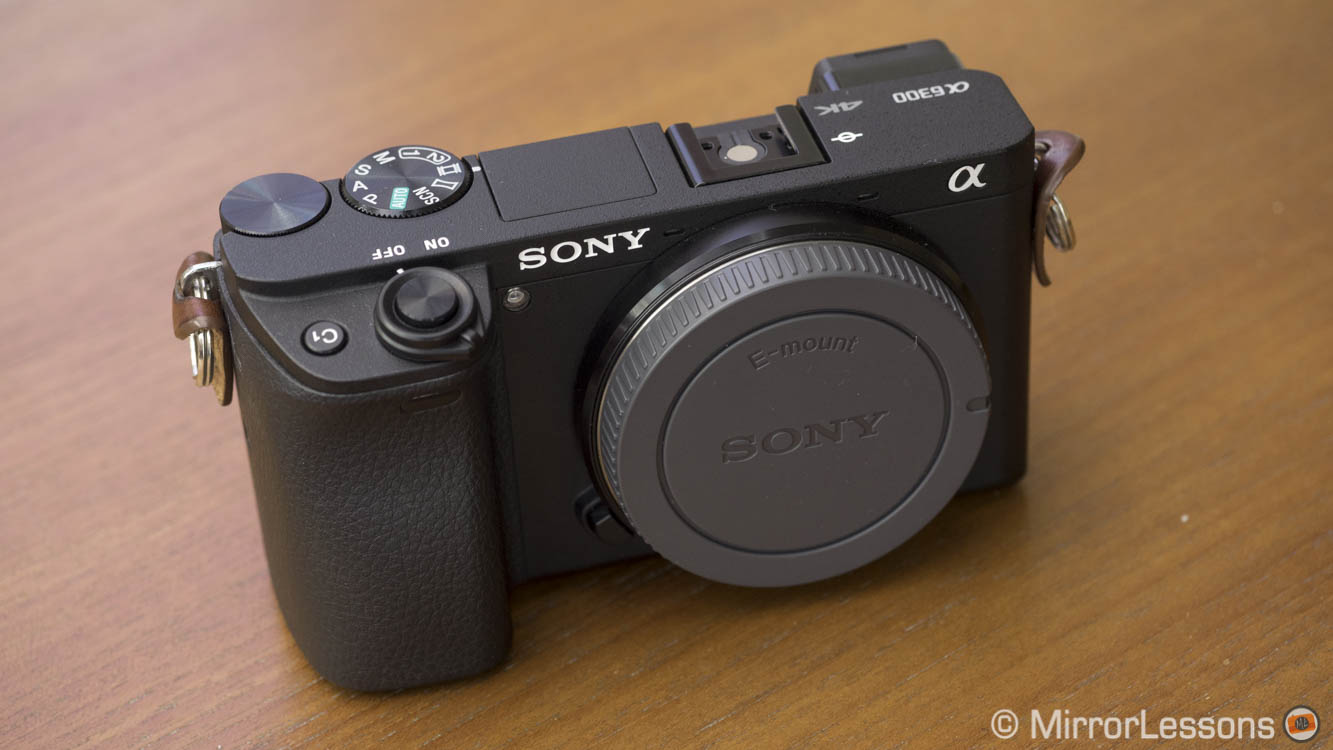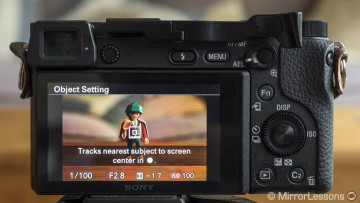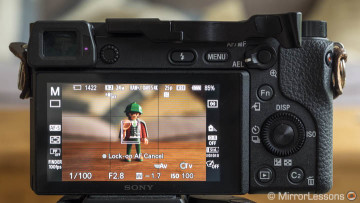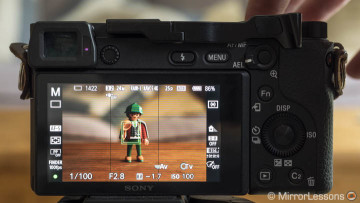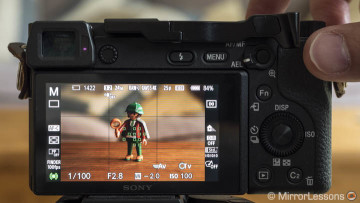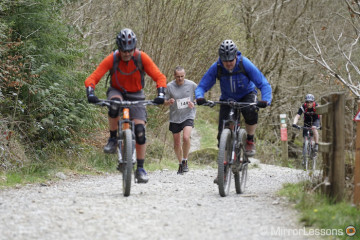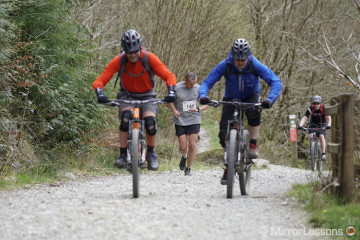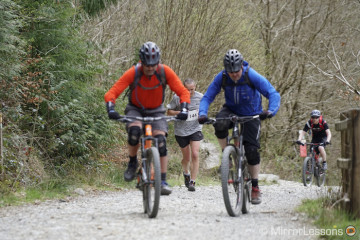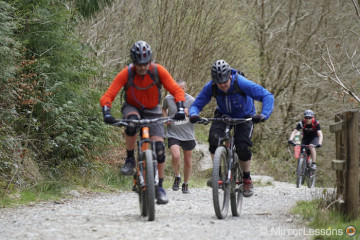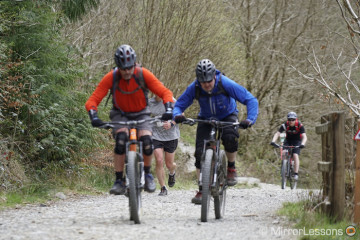One of the primary arguments against mirrorless cameras has always been the autofocus performance for action genres like sports and wildlife, and mirrorless manufacturers have been hard at work finding ways to close the gap with DSLRs. These solutions include adding phase detection points, better software, and faster AF motors in the lenses.
The camera that could be said to have narrowed the gap to the point that it is almost non-existent is the Sony a6300. It’s new hybrid autofocus system is so advanced that, with some experience, you can get extremely good results for a variety of action-based genres.
But I’m getting ahead of myself. In this review, we’re going to be covering the good, the improved and the not-so-good of this new camera. Just like our Olympus Pen F and Panasonic GX80 reviews we published a few days ago, we’ll be using a new format which we hope you find more personal and to-the-point. Let’s get started!

Sony a6300 Main Specs
- Sensor: 24 MP Exmor CMOS
- Lens system: E-mount
- Weatherproof: Dust and moisture
- Internal Stabilisation: None
- Autofocus: 425 phase and 165 contrast detection AF points
- Continuous shooting: 11 fps (w/o live view), 8 to 3 fps (with live view)
- ISO Sensitivity: 100 – 25600 ISO (Push 51200)
- Shutter Speeds: 1/4000 to 30 seconds
- Viewfinder: 0.39 type OLED electronic viewfinder with 2,359k dots, approx. 100% FOV coverage and 0.70x magnification
- Rear monitor: tilting 3″ TFT screen (921k dots)
- Movie recording: 4K up to 30fps, Full HD up to 120fps
- Built-in Flash: Yes
- Extra Features: WiFi, NFC, Panorama, AE Bracketing
- Dimensions: 120 x 66.9 x 48.8mm
- Weight: 404g (including battery and memory card)
[toc heading_levels=”3″]
What I like the most: Autofocus performance
Main Features:
- 4D FOCUS™ hybrid autofocus system with High-density Tracking AF Technology
- 425 phase detection points across the sensor surface
- 169 contrast detection points
- Maximum 11fps continuous shooting
I always tell people interested in the a6300 that the only logical reason to choose this camera over other mirrorless options, including its predecessor the a6000, is the new hybrid autofocus system. Sony has put all its effort into rendering this the star feature of the a6300, admittedly at the expense of some important traits we’ll be discussing later on.

Click to open a full res version

Click to open a full res version
The Sony a6300 has a brand new 4D FOCUS™ hybrid autofocus system with High-density tracking AF technology that consists of 425 phase detection points and 169 contrast detection points. The phase detection points cover almost the entire surface of the sensor, allowing the camera to effectively track subjects regardless of where they move within the composition.
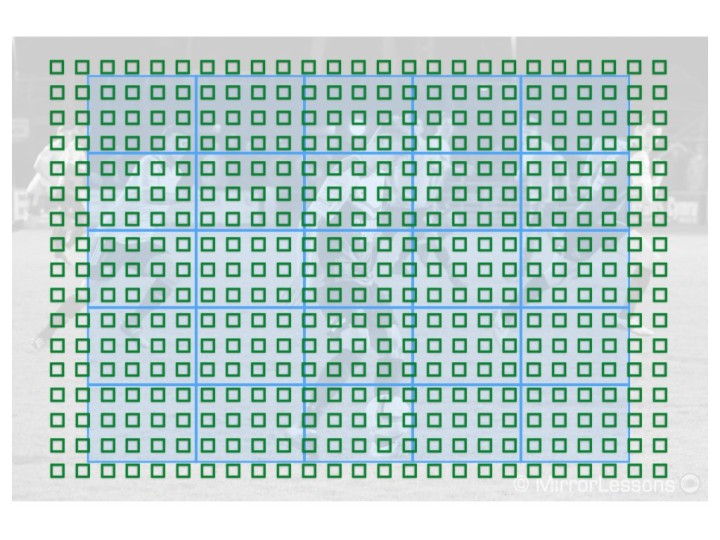
It has AF-S, AF-C, AF-A, DMF and MF modes and the following Focus Area options:
- Wide – Activates all AF points across the frame. It is good for unpredictable subjects.
- Wide + Lock-On AF – The same as Wide with the benefit of also being able to track your subject.
- Zone – Lets you activate AF points within a specific area of your frame. Gives you less coverage than Wide but more precision. Good for groups of subjects moving together or for a fast single subject that you keep at the centre of your frame.
- Centre – Good for predictable subjects that you can easily follow and are positioned at the centre of your frame.
- Centre + Lock-On AF – The same as Centre with the benefit of also being able to track your subject.
- Flexible Spot – Choose between a small, medium or large spot that you can move around the screen with the control pad to select a specific focus point. Good for static shots where you want to pinpoint the subject.
- Expand Flexible Spot – The same as Flexible Spot with a fine border of phase detection points.
- Expand Flexible Spot + Lock-On AF – The same as Flexible Spot except that you can activate Lock-On AF tracking by pressing the centre button on the control pad.
About Lock-On AF
In order to be used with Wide, Centre or Expand Flexible Spot, Lock-On AF must first be turned on (6th page of the shooting menu, through a custom button or Fn Menu).
Once activated, you press the centre button of the control pad on the rear to select the subject to track. The LCD or EVF will display a white doulble-lined rectangle on the subject. You can cancel the Lock-ON AF at any time by pressing the centre button of the control pad again.
In S-AF mode that rectangle becomes green when you half-press the shutter release button (AF lock confirmation). In C-AF, when you half press the shutter button the camera will display a selection of AF points on the subject.
Note that Lock-On AF is different from High Density tracking. The latter is automatically used by the camera to concentrate a higher number of AF points on the detected subject regardless of whether Lock-On is activated or not. Lock-On AF is an extra option that tells the camera which subject you are interested in.
With native E-mount lenses, the a6300’s autofocus performance is extremely effective combined with any of the Focus Area options, especially in the Wide with Lock-On AF or Zone modes. Very rarely does the camera lose track of the subject or hop over to another subject, as you can see in the sequence below where I was tracking the man behind the two bikers (Wide and Lock-On AF).
This performance is aided by the fast maximum continuous shooting speed of 11fps (though you may prefer using 6fps or 8fps to avoid ending up with hundreds of near-identical shots).
Beyond the standard test of photographing each other running, Mathieu and I also used the camera for a low-light soccer game, a local marathon, and birds in flight. Our average hit rate was between 70% to 85% depending on the subject, light conditions and our ability to follow the subjects effectively.

Click to open a full res version

Click to open a full res version

Click to open a full res version
This performance carries over to video shooting as well. The camera proved very capable of tracking a variety of subjects effectively in C-AF mode. You can see a few examples below.
If that weren’t enough, the hybrid autofocus system works with adapted DSLR and DSLT lenses, too. For Canon or Sigma lenses, you’ll need an adapter like the Metabones Mark IV whereas the Sony LA-EA3 adapter is the best match for A-mount lenses.
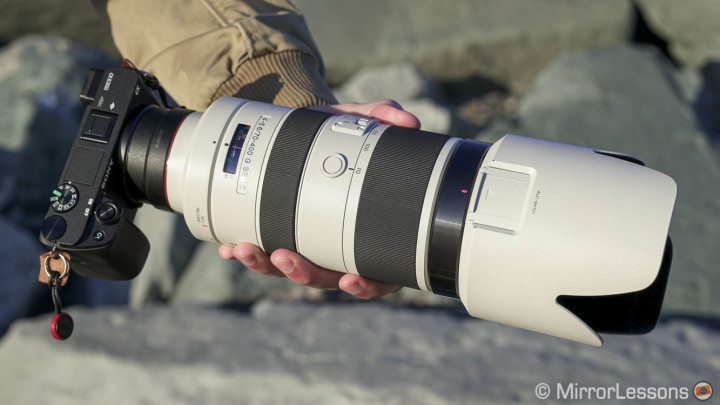
In our experience, the autofocus performance you’ll experience with adapted lenses will not match that of native E-mount lenses, though the performance will depend on the lens and adapter. For example, we used the A-mount 70-400mm f/4-5.6 with the a6300 and found that it struggles in continuous AF when following fast moving subjects at medium or short distances.
Our advice is to avoid buying lenses to adapt to the a6300 unless a) you find them for an amazing price, or b) there isn’t an equivalent focal length/range for the E-mount. If you already own some DSLR or DSLT lenses, adapting makes more sense since the only investment would be the adapter itself.

The a6300 has a few extra options that are worth mentioning. A new addition is AF in Focus Magnifier mode. You can use the autofocus while enlarging the area of your screen which is helpful to make fine adjustments while shooting macro on the a6300.
Another useful feature is Eye-AF (Eye detection). It can be used in AF-S and AF-C. The AF point rarely locks onto unrelated body parts (ears, forehead, nose) but might pick the wrong eye on occasion. It remains the best Eye detection system among mirrorless cameras.

The only annoying part is that you must assign Eye AF to a custom button, then press and hold it in order to work. I wish I could activate it simply by half pressing the shutter release button.
Are there any downsides to this incredible autofocus system?
Only one, which is that the camera (or at least our model) may occasionally freeze after many successive bursts. When this happens, you’ll be faced with a black screen and none of the settings will be accessible. At this point, you have either have to take out the battery or wait 30 seconds to 1 minute for the camera to spring back to life. Admittedly, this only happened to us a few times, all during the same shooting session, so it may have been a one-off. Since we bought the a6300 and plan to keep it for a while, I will update this section if I observe this behaviour again.
But let’s not close this section on a negative note. Overall, the autofocus performance is pretty outstanding and I can see action photographers looking for a compact solution being very happy with the results.
In fact, all the autofocus system needs to be truly complete is at least one constant aperture telephoto lens for the APS-C system. Although the performance is excellent with full-frame E-mount lenses like the 70-200mm f/4, 70-200mm f/2.8 GM, and the brand new 70-300mm f/4.5-5.6, their size can compromise the ergonomics of the small body.
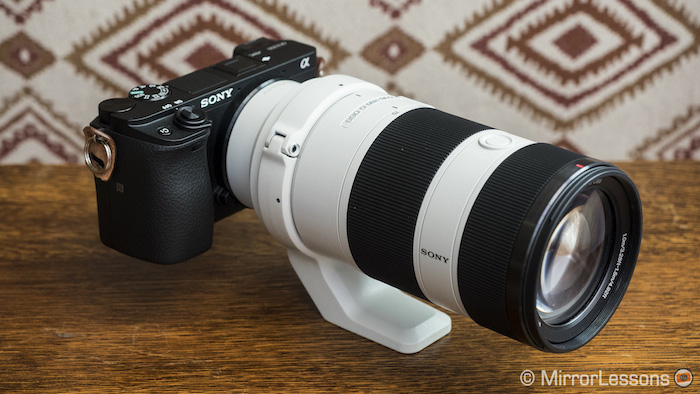
What I like: Electronic viewfinder
Main Features:
- 0.39” type XGA OLED electronic viewfinder
- 100% field coverage
- 0.70x magnification
- 2,359K-dot resolution
- Live View at up to 8fps continuous shooting speed
- 50fps or 100fps refresh rate
The a6300 has a 0.39” type XGA OLED electronic viewfinder that delivers a bright and colourful image with excellent clarity across the frame and no signs of ghosting or moire, making it one of the best EVFs on the market today. It is smaller than that of the A7 series but the reduced size doesn’t really bother me.
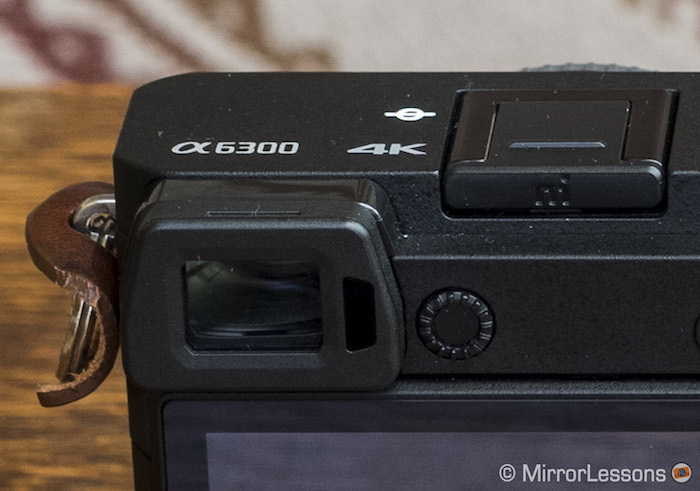
At up to 8fps continuous shooting speed, the EVF (and LCD) give you a simulated Live View of your scene with partially transparent blackouts instead of showing you the last picture taken. This upgrade has made it easier to follow the action when you are dealing with slow to medium paced subjects, and provides an experience similar to that of an optical viewfinder.
The only small annoyance is that the constant changes in brightness due to the blackouts can be somewhat distracting, especially when tracking very fast-moving subjects.
You can also toggle between a finder frame rate of 50fps and 100fps (or 60fps and 120fps in the US). Picking the faster frame rate will results in a smoother experience when shooting fast action (in low light especially) but also drains the battery more quickly.
Keep in mind that those with glasses may feel the need to purchase an extra eye cup for a more comfortable shooting experience.
What I like: Video performance
Main Features:
- Internal 4K video (XAVC S at 100mbps) with full pixel readout and no pixel binning
- Full HD in XAVC S up to 120fps
- S-Gamut/S-Log shooting and nine picture profiles
- Clean 8-bit 4:2:2 HDMI output
Just a few years ago, shooting internal 4K video with a body as compact as that of the a6300 was the stuff of dreams. Nowadays, 4K is becoming the standard on mirrorless bodies from Sony and Panasonic, and I wouldn’t be surprised if Olympus and Fujifilm follow suit within the next year or two.
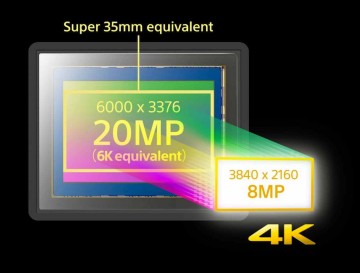
The a6300 is the first non-full-frame interchangeable-lens camera from Sony that is capable of shooting and recording internal high resolution 4K video with full pixel readout and no pixel binning. To do this, the camera uses 20MP without cropping the sensor (except on the top and bottom) to get the Super 35mm format (16:9 aspect ratio). This corresponds to 6K of resolution which is then down-sampled to 4K.
Also incorporated are nine picture profiles designed especially for video, including S-log2 and S-log3 gamma to record the widest dynamic range possible and colour grade in post-production. However, when these gammas are selected, the minimum ISO you can use is 800. S-log3 is has a wider dynamic range but can also produce more noise in the shadows if not colour corrected properly.
Below you can see the difference between S-log2 and the colour graded version.
[twentytwenty]


[/twentytwenty]
Personally we think that custom picture profiles (with other gamma profiles rather than S-log2 or S-log3) can be useful for many situations since you get more dynamic range and softer colours in comparison to the Creative Style profiles designed for stills. I would recommend using these extreme gamma profiles only if you have a precise idea of how you want to grade your footage. Also remember that to get the best results, you might want to consider recording to an external recorded via the HDMI port to have less compression (8bit 4:2:2).
In addition to 4K, you also get Full HD in XAVC S up to 100fps (PAL) and 120fps (NTSC). You can record at these frame rates at the normal speed with sound which means you will have to conform the footage in post to get a slow motion effect. You also have the option of HFR, meaning that the camera conforms the footage to 25fps slow motion in-camera. The only downside is that the bit rate is lower (25mbps instead of 100mbps).
The overall quality of the footage is excellent in 4K. It is sharp, doesn’t produce much moire or aliasing, and it is usable up to 6400 ISO. In fact, it reminds us of the footage produced by the A7s II which isn’t surprising.
Even the low light performance at high ISOs is excellent: the footage remains very clean up to 12800 ISO. From 25600 the noise becomes more invasive but it still delivers a decent result.
You can watch an high ISO comparison from minute 0:44 on the video below.
The quality of Full HD isn’t as impressive but is still perfectly usable. Since you don’t get full pixel readout, the footage isn’t quite as sharp and you can come across some aliasing.
Below you can slide between a crop from Full HD footage and down-sampled 4K footage to see the difference in terms of aliasing and sharpness.
[twentytwenty]


[/twentytwenty]
The two biggest issues in the video department are overheating and rolling shutter.
Depending on the temperature of your environment, overheating can occur about 15-30 minutes into filming in 4K, and it takes a while for the camera to cool down to the point that you can use it again. This can be especially problematic if you’re on a long shoot and don’t have a second body to work with.
Update: In early August 2016, Sony released firmware update 1.10 which is supposed to fix the overheating issue. We tried it ourselves and found that we were able to record for one hour before the overheating message appeared.
As for rolling shutter, it is surprisingly worse on the a6300 than on its predecessor, the a6000, but it isn’t the only camera to suffer from this problem. Unfortunately there isn’t a fix for this if you need to perform fast movements with the camera.
All in all, Sony has done a great job of putting lots of interesting video features into a very compact and portable package. It would have been nice if users had been provided with a few extras like a headphone jack to accompany the mic input, the possibility to connect an external module that adds professional audio connections (XLR) or 10 bit HDMI output but it’s hard to complain considering the price and size of the body.
What I like: Silent shooting
Main Features:
- Mechanical shutter: 30s – 1/4000s
- First curtain shutter: 30s – 1/4000s
- Silent electronic shutter: 30s – 1/4000s
I know this is a brief point, but it didn’t fit in anywhere else and had to be mentioned. Of all the mechanical shutter sounds I’ve heard, I like that of the a6300 (and a6000) the least. It sounds much like a miniature machine gun, and on the a6000, proved a bit of an embarrassment whilst shooting my dad’s choir concert last summer!
The addition of a completely silent electronic shutter means that you can now use the camera in situations where silence is paramount. However, the maximum speed of both the silent and mechanical shutter remains 1/4000s, which isn’t very impressive considering that certain mirrorless models like the Fujifilm X-Pro2 can shoot up to 1/32000s with the electronic shutter.
What has improved (but isn’t a deal-breaker): Image quality
Main Features:
- New 24.2MP APS-C sized Exmor CMOS sensor with copper wiring
- New BIONZ X processor
- 100 – 51200 ISO sensitivity range
- 14-bit RAW option and Extra-Fine JPGs
The image quality from Sony APS-C cameras has never disappointed us, and the same can be said for the a6300. Although the 24MP resolution hasn’t changed from previous models, the a6300 has a brand new APS-C sensor and BIONZ X processor that work together to deliver better resolution especially at higher sensitivities.

Click to open a full res version

Click to open a full res version
The colour rendition is pleasant enough and thanks to the small tweaks make to the white balance algorithm, they also appear a little more natural to my eye than on previous models such as the a6000. However, I still have a strong preference for the colours from other brands such as Fujifilm and Olympus, as they tend to have a more “organic” feel to them.
Speaking of colours, given the effort being made by other brands to produce attractive colour profiles for the JPGs, I was rather hoping that Sony would do the same with the a6300 and its Creative Styles. Sadly, nothing has changed in this department – we still have the same set of profiles including Standard, Vivid, Monochrome and so on. Maybe this is something Sony will consider for the A7r III when it comes out!

Click to open a full res version
Though I still consider the camera usable up to around 6400 ISO, the results at 12800 and 25600 ISO in particular are noticeably cleaner and sharper than those from the a6000, with better control over chroma and luminance noise.

Click to open a full res version

Click to open a full res version

Click to open a full res version
I’d never use the a6300’s new 51200 ISO value for real-world shooting, but it is interesting to observe that it performs in a similar manner to 25600 ISO on the a6000.



As for the JPGs, the camera manages to preserve lots of detail even at the higher ISO values. In exchange for some colour noise with NR left to Off, you get fewer details with NR set to Normal. I generally prefer to leave NR to Low to get the best of both worlds, and avoid ISOs higher than 6400.


If you’re interested in seeing a full gallery of real-world high ISO images taken with the a6300, you can check out our dedicated article here.
Because the a6300 provides a 14-bit RAW option, the dynamic range is also better. The files produce much less noise, colour shift and banding if you try to recover all the details from the shadows and highlights.


Click to open the full res version.

Click to open the full res version.
There is also a DRO (Dynamic Range Optimiser) option for the JPGs that can be set in five different levels (LV5 being the one that gives the vastest range). Overall it does a very good job of retaining details in the highlights and shadows.

Click to open the full res version.
Now, these improvements might suggest that image quality is indeed a “deal-breaker” but I personally don’t feel they are enough to justify the extra expense of this camera in comparison to, say, the a6000 or an even cheaper model like the a5100. After all, how often do you actually need 25600 ISO for a real-world shoot? And when is it ever necessary to recover all the highlight and shadow detail in a RAW file?

Click to open a full res version
In my humble opinion, we need to look beyond image quality since most of today’s sensors deliver pretty amazing results in terms of resolution, dynamic range, sensitivity, and colour.

Click to open a full res version
What I don’t like: Design and usability
Main Features:
- Dust and moisture resistance
- Slightly larger grip and reinforced metal mount
- Tilting LCD screen (90 degrees up and 45 degrees down)
- Built-in EVF
- 9 customisable buttons around the body
- WiFi compatible
With the a6300, Sony had a real opportunity not only to improve the design of the camera but also to completely rework the awkward menu system that seems to deteriorate with every successive model. This could have been done with the help of working photographers, much in the way Fujifilm consulted its X-Photographers throughout the design process of the X-Pro2. Sadly, this is an opportunity Sony seems to have been squandered, because the a6300 is nearly identical to the a6000 save a few tweaks here and there.
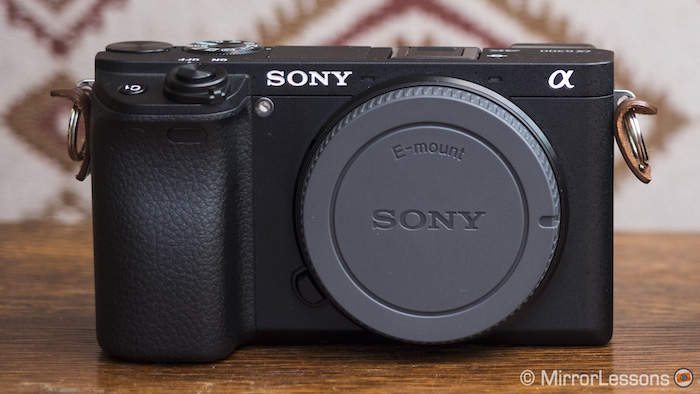
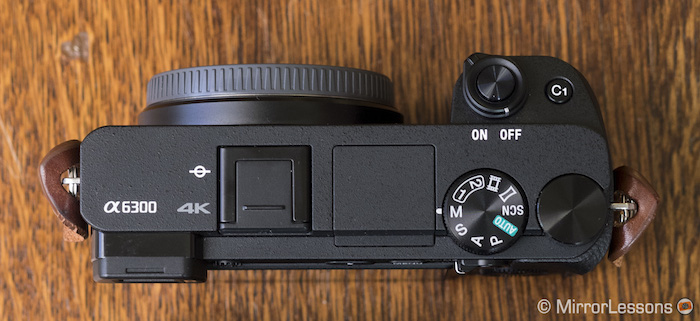
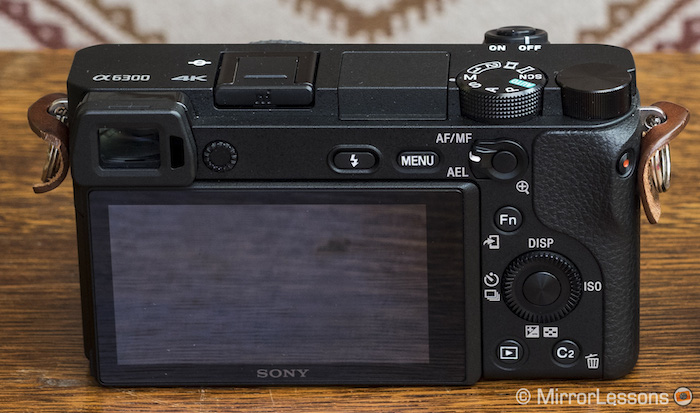
Let’s talk about the design first. To the casual eye, it has everything you need: a PSAM mode dial, a dial to change the shutter speed or aperture, a tilting 3-inch LCD screen, an electronic viewfinder, a built-in flash, lots of customisable buttons, a chunky grip, and a compact form.
It also has two useful Memory Recall 1 and 2 options on the mode dial that allow you to quickly access your favourite settings. I ended up using them quite a lot when I had to rapidly switch between settings for sports and landscapes.
So, what are some of the problems? Let’s have a look now:
Touch sensitivity: Most mirrorless cameras now have touch sensitive screens, including Sony’s own a5100 model, but the a6300 does not. Why Sony feels this feature isn’t useful, especially on a camera being marketed as a video tool, is beyond me.
Multi-angle screen: For video, a screen that tilts up 90 degrees and down 45 degrees like the one on the a6300 isn’t as convenient as a multi-angle articulating screen.
Screen brightness: When shooting in 4K, the camera automatically reduces the brightness of the LCD screen, something that doesn’t happen when shooting Full HD. We’re not sure if this is to conserve battery life, but it can impede you from seeing the image on-screen when shooting in bright sunlight.
Extra dial: Most high-end cameras have two dials – one for shutter speed and the other for aperture. The a6300 only has one, so to change the other value, you must use the control wheel on the rear which isn’t very comfortable. Personally, I feel they could get rid of the built-in flash and replace it with another dial. Sony could supply a small flash unit to put on the hot-shoe like Olympus does with some of its cameras.
Function buttons: Yes, there are plenty of customisable buttons around the body, but they aren’t all well placed. For example, it would have been great to have a function button on the front of the body that you could easily reach with your index finger.
Ergonomic grip: The a6300’s grip is chunkier than the a6000’s but it still isn’t as comfortable as some other grips I’ve used, especially with longer lenses.
Control wheel: Over time, I’ve found that the top and right buttons on the control wheel have lost some of their sensitivity. (This may be limited to my sample.)
Shutter release button: Why isn’t it possible to use the shutter release button to start recording in movie mode?
Changing AF point: To change the AF point, you must press the centre button on the control wheel before you can move it around. This wastes valuable time when shooting out in the field. You should be able to directly press the four buttons on the control wheel to change the focus point (or better still, Sony should include an AF joystick like the one on the Fujifilm X-Pro2).
These are just a few of the design quirks I feel Sony could fix. You can learn to live with them, but added up, they give you the impression of using an unrefined mechanical box rather than a proper photographic tool.
A similar argument can be applied to the notoriously complex Sony menu system. I know I keep mentioning the Fujifilm X-Pro2 but it exemplifies how a company can rework an unorganised and unfriendly menu system into something straightforward and easy to use.
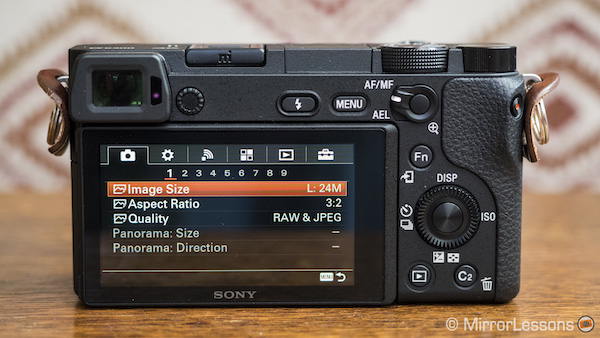
Once again, it is possible to adapt to the menu with time, patience and a good look through the manual but it could be much better out of the box. Hopefully, they will sit down and re-write the menu from scratch for the next generation of Sony cameras.
Before finishing this section, I should mention one design improvement I liked and that’s the introduction of dust and moisture resistance. It seems to work well, and since telephoto lenses like the FE 70-200mm f/4 are also weather-resistant, you shouldn’t have any fear of shooting action in inclement conditions. It also has a reinforced metal mount which gives you more security when using larger lenses.
What I don’t like: Lack of stabilisation
This is one omission that really left me scratching my head. I’m not an engineer by any means, but I find it strange that Sony chose to forego in-body stabilisation on a body that could truly benefit from it for both video and stills (especially with adapted lenses). And it isn’t that Sony isn’t capable of giving its bodies stabilisation. (After all, all its second generation A7 series cameras all have 5-axis IBIS and it works quite well.)
A good example of when in-body stabilisation could have come in handy was during our trip to our local butterfly house which isn’t particularly well lit even on the sunniest of days. Since I had paired the (unstabilised) Touit 50mm f/2.8 with the a6300, I had to rely on a monopod whenever I went below ISO 800.

My best guess is that Sony didn’t want to further raise the price of the a6300 by giving it in-body stabilisation since its target niche is fast action at high shutter speeds, not to mention that most E-mount telephoto lenses are optically stabilised.
What I don’t like: Battery Life
My final disappointment concerns the battery life, a problem that extends to all Sony mirrorless cameras, not just the a6300.
There are certain features that chew up more battery life than others, such as 4K shooting, high continuous burst, the 100fps frame rate for the EVF, and leaving the LCD screen to “sunny” to make it brighter. By avoiding these features, it is possible to make a battery last for a full day of non-intensive shooting but otherwise, you’ll need 3-4 on hand.
Although I doubt it is possible for Sony to make one now, it would have been nice had they produced an extra battery grip just as other brands have done for their flagship mirrorless cameras.
I also wish they had included an external charger with the camera along with the USB charger, as not everyone finds it convenient to charge the camera via USB.
Conclusion – Is the a6300 worth it?
I went into this review hoping to love everything about the Sony a6300 and came out feeling enthusiastic about only a couple of aspects.

The autofocus performance combined with the Live View of the EVF is beyond anything we’ve seen from a mirrorless camera to date, and it comes packaged in one of the smallest bodies in the high-end mirrorless sphere. If all you shoot is sports and wildlife and are in search of a compact solution, this camera should be at the top of your list.

The 4K footage from this camera is up there among the best. The only reason I’d be less inclined to recommend it for serious video work is because there are a few roadblocks to a satisfying shooting experience – the worst offender being the overheating issue. A much more reliable (and cheaper) alternative could be the new Panasonic GX85, which in addition to internal 4K has 5-axis in-body stabilisation, no observable tendency to overheat, and a better selection of lenses.
Nearly everything else about the a6300 either remains relatively unchanged or requires an overhaul.
The image quality from the new 24.2MP APS-C sensor is excellent – but this is unsurprising as most cameras deliver outstanding results these days, including the a6300’s less expensive predecessor, the a6000 – and I think we can all agree that the time has come not only for Sony to make the design of the APS-C bodies even more user-friendly (think fully articulating touchscreens, extra dials and better-placed function buttons), but also to revamp the menu system. The new menu Fujifilm gave to the flagship X-Pro2 is living proof that it can be done, and done well.
Perhaps the best thing Sony can do at this point is seek the advice and input of working photographers to improve the usability of their cameras, and transform them into real photographic tools rather than gadgets design to overawe. They have the technology in spades; all they need is the photographer’s touch.
